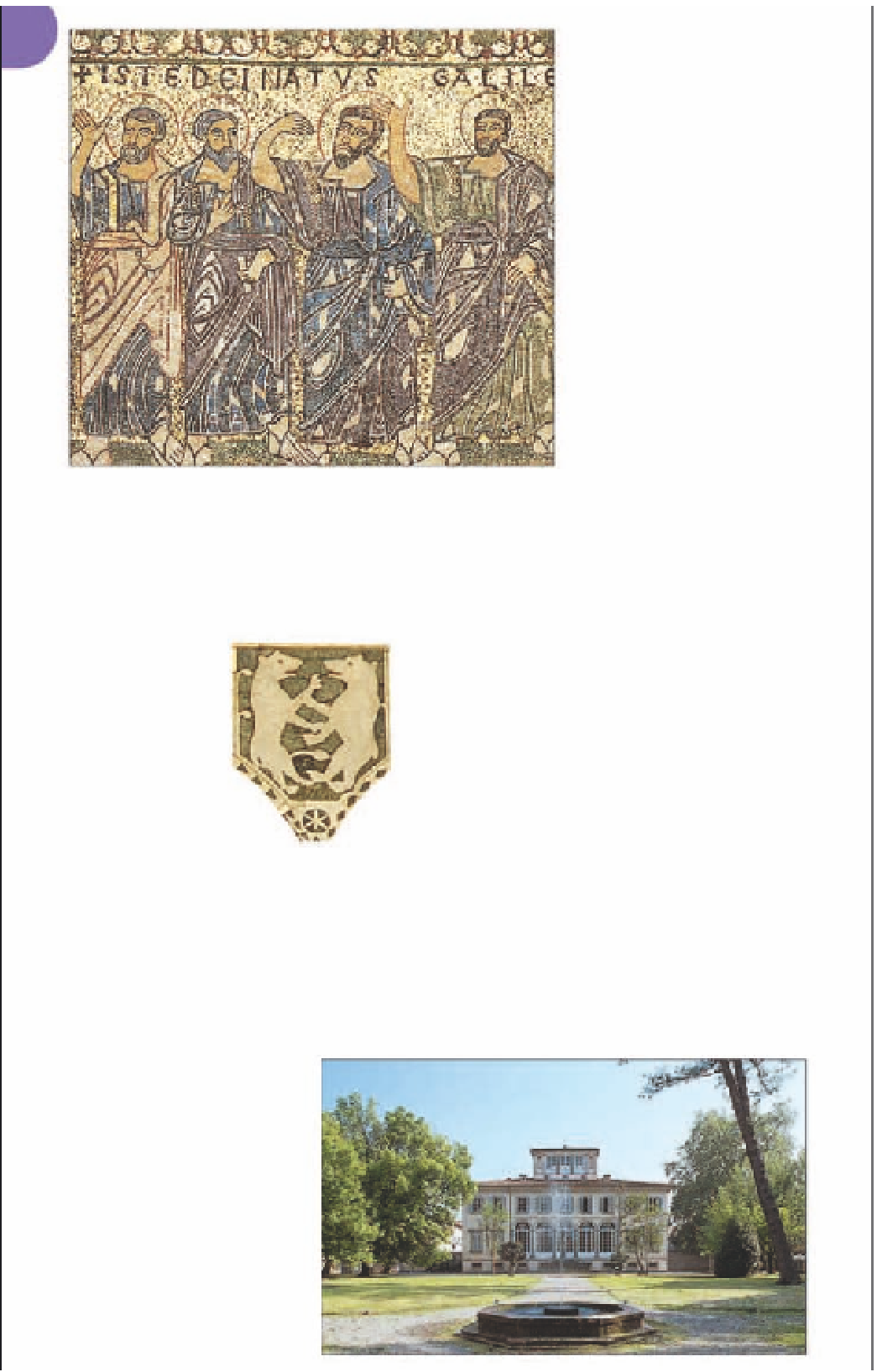Travel Reference
In-Depth Information
huntsmen on horseback rather
than Christian subjects. Only
the huge winged figure of St
Michael, standing on the
pediment and flanked by two
angels, marks this out as a
church. The splendour of the
façade, built over a long period
from the 11th to the 14th
centuries, is matched by the
arcading of the belltower.
The interior has little of
interest except for Filippino
Lippi's restored
Saints Helena,
Jerome, Sebastian and Roch
,
among the most beautiful of
his paintings.
The square outside is circled
by 15th- and 16th-century
palazzi, which are now mostly
occupied by banks, while the
portico of the Palazzo Pretorio
to the south shelters a 19th-
century statue of Lucca's
greatest artist and architect,
Matteo Civitali (1436-1501).
Apostles from the mosaic on the façade of San Frediano in Lucca
R
San Frediano
Piazza San Frediano.
R
San Michele in Foro
Piazza San Michele.
daily.
The striking façade of Lucca's
San Frediano church features
a colourful 13th-century
mosaic,
The Ascension,
by the
School of Berlin-
ghieri. Inside, to
the right, is a
splendid Roman-
esque font which
could easily be
mistaken for a
fountain, because it
is so big and impress-
ive. The sides are carved
with scenes from
The
Life of Christ
and
the story of Moses.
One dramatic scene
shows Moses and his
followers dressed in 12th-
century armour, looking like
Crusaders, as they pass
through the divided Red Sea
with an entourage of camels.
Amico Aspertini's frescoes
(1508-9) in the second
chapel in the north aisle tell
the story of Lucca's precious
relic, the Volto Santo
(see
p180)
, and give a good idea
of what the city looked like
in the early 16th century.
Also in the church is a
coloured wooden statue
of the Virgin, carved by
Matteo Civitali, and an altar-
piece carved from a single
block of marble by Jacopo
della Quercia in the Cappella
Trenta. It is carved in the
shape of a polyptych with
five Gothic-spired niches.
#
daily.
As its name suggests, this
church stands on the site of
the ancient Roman forum. It
has a wonderfully rich Pisan-
Romanesque
façade that com-
petes in splendour
with that of San
Martino
(see
pp180-81)
. John
Ruskin, the English
artist and art
historian whose
work did so much
to revive interest in
Italian art during
the 19th century
(see p55)
, spent
many hours sketching the
rich mixture of twisted marble
columns and Cosmati work
(inlaid marble). The façade is
almost barbaric in its exuber-
ance, and the inlaid marble
scenes depict wild beasts and
#
P
Via Fillungo
Lucca's principal shopping
street winds its way through
the heart of the city towards
the Anfiteatro Romano
(see
p178)
. It is a good place to
stroll in the cool of the early
evening. The upper end,
towards San Frediano church,
has several shops with Art
Nouveau ironwork, while San
Cristoforo, the 13th-century
church halfway down the
street, holds exhibitions of
work by local artists.
Detail from façade of
San Michele in Foro
P
Villa Bottini
Via Elisa.
Tel
0583 49 14 49.
Garden
9am-6pm daily.
The pretty walled garden of
this late 16th-century building
is open to the public. It is
also used occasionally in
summer for outdoor concerts.
#
Villa Bottini and garden




































